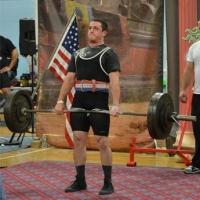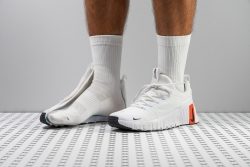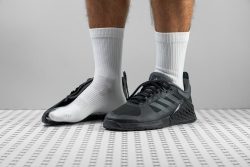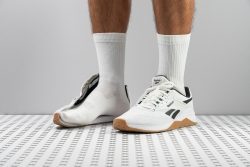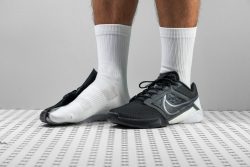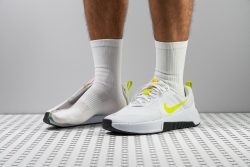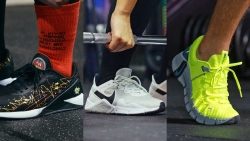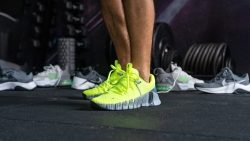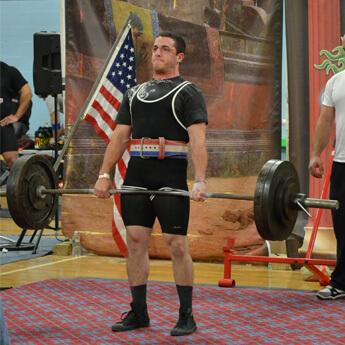7 Best Hiit Shoes in 2025
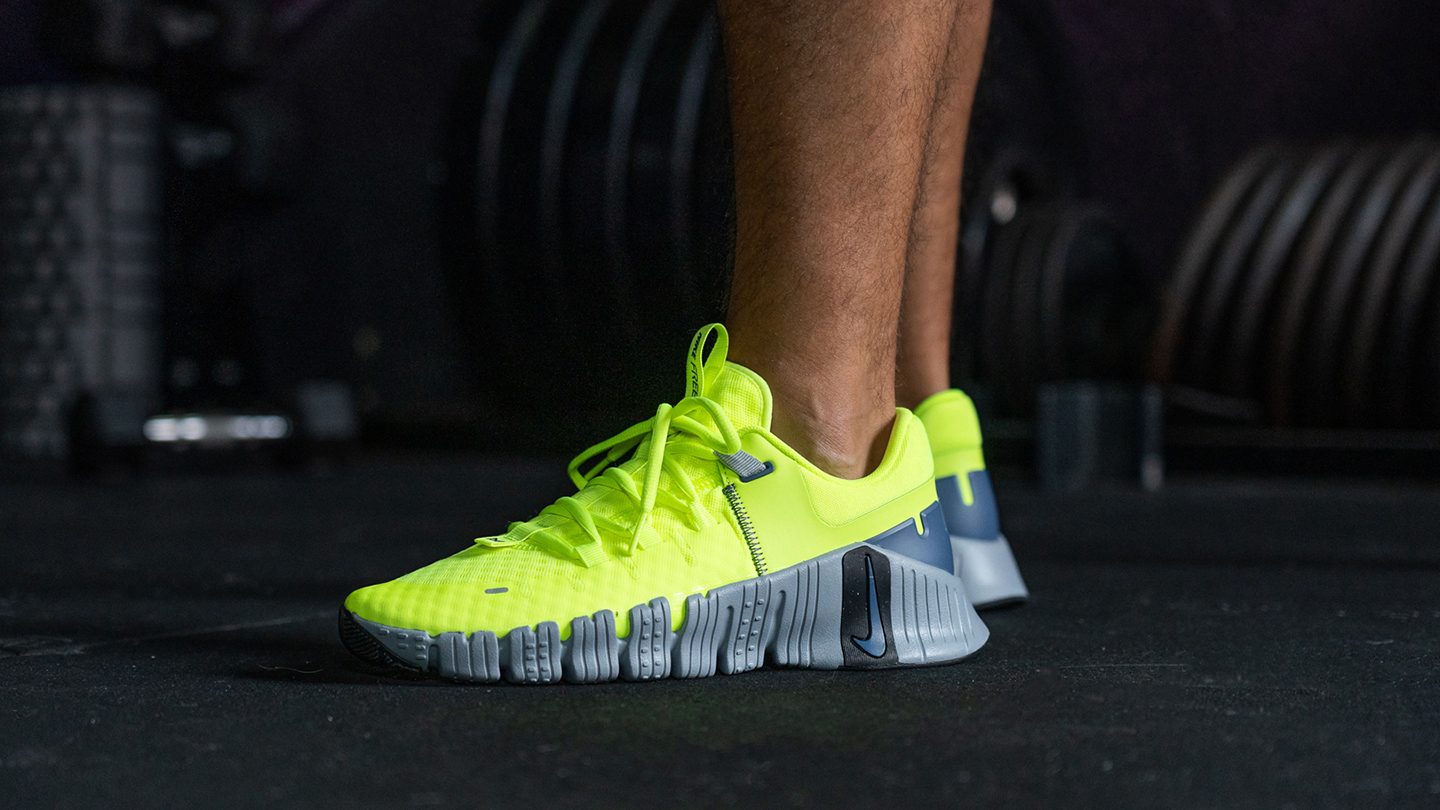
We buy shoes ourselves. We earn commissions when you buy through us, at no extra cost. Why trust us
High-intensity interval training isn't for the faint-hearted. But to do it well, you need the support of proper training shoes that are attuned to the unique demands of HIIT.
We have scrutinised dozens of training shoes from 10+ brands to find out which ones live up to the challenges of this demanding programme. But because HIIT involves a spectrum of activities, from weightlifting and explosive jumps to stair climbing and treadmill running, we selected top picks in more than one category to help you choose the best.
How we test hiit shoes
A HIIT programme consists of various exercises. We are dedicated to tackling all of them to assess each training shoe's performance. Our opinions are based on our personal experience in the gym.
But that’s not nearly all.
We include science in our shoe testing process to make our reviews as comprehensive and objective as possible. In our lab, we slice the shoes in half and use all sorts of tools to measure parameters like stack, drop, stiffness, shock absorption, energy return, outsole hardness, and breathability, among 20+ other characteristics that proved relevant for HIIT enthusiasts.
Last but not least, we remain bias-free by buying all the tested shoes using our own money.
Best HIIT shoes overall






















































What makes it the best?
The Nike Free Metcon 6 reigns the HIIT category with its superior combination of flexibility and stability in our lab and exercise trials. Its airy design makes every movement effortless, while its unwavering support ensures confidence and sure-footedness.
The adaptive midsole, enhanced by deep outsole cutouts, bends with our feet easily and requires 18.9% less force than average to reach 30 degrees in our flex test. This low score highlights the shoe’s unmatched flexibility! Furthermore, it earned a low 2/5 torsional rigidity score in our assessment, meaning it twists with minimal resistance.
Featuring a balanced mix of cushioning and ground connection, the shoe’s velvet foam is 17.9% softer than average per our durometer. The extended midsole width of 113.9/94.4 mm and firmer 27.8 HA foam under the heel offer exceptional support for lateral movements and quick movement changes. Even as we lift weights, we never have the feeling of toppling over.
Amazingly, this whole package is only a mere 9.7 oz (274g) vs. the average 10.8 oz (306g) trainer. FM6 never burdened us with its weight and even kept heated sessions breezy with its seamless ventilation. However, the upper’s delicate mesh is prone to abrasions. We recommend activities like rope climbing to prolong the shoe’s life.
Pros
- Fantastic breathability
- Very light on foot (lighter than average too)
- Abundant cushioning for HIIT
- Most flexible cross-trainer ever
- Excellent stability for moderate weightlifting
- Sock-like fit in a bootie upper
- Accommodating toebox (for medium feet)
- Great grip on gym surfaces
Cons
- NOT for rope climbs (lacks protection)
- Can be hard to put on (narrow opening)
HIIT shoes with the best stability
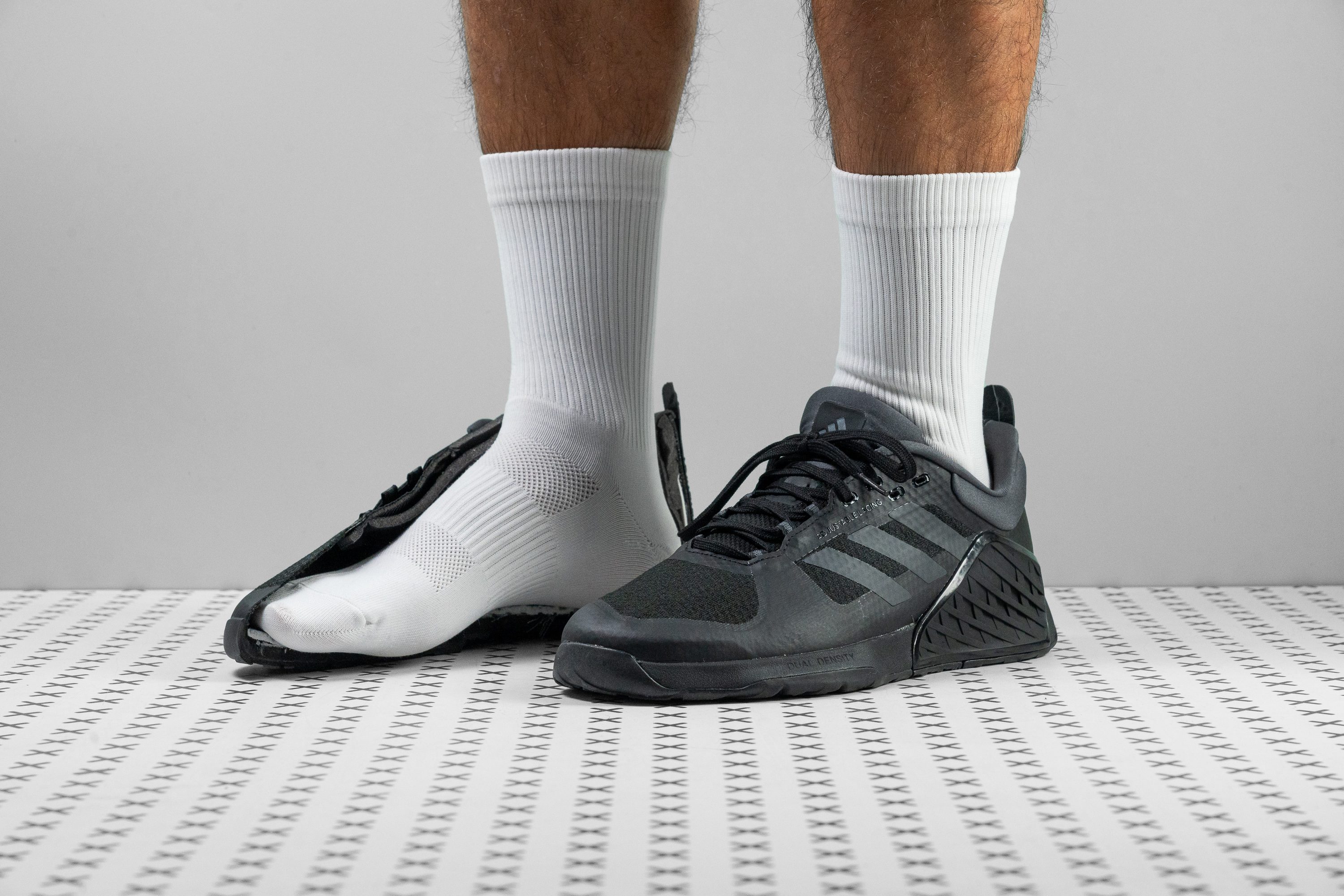














































What makes it the best?
Among the HIIT shoes we wore and lab-tested, Adidas Dropset 2 is the best stability trainer. It has an undeniably supportive structure featuring a firm heel, a wide and grounded platform, and a grippy outsole. We find it well-suited for lifting but also offers freedom and comfort for HIIT workouts by providing a lot of flex and out-of-this-world ventilation.
We feel surefooted with the vast and low platform. We received enough cushion for jumps and support for steady lifts. Dropset 2 features a dual-density foam. Our durometer shows it's a balanced 31.1 HA in the forefoot and a solid 47.0 HA in the heel. The latter is significantly 68.5% firmer than average. We felt its presence as it didn’t compress on our snatches and clean and jerks.
Offering exceptional ankle support are the TPU panels on the outer sides. Giving us extra control on lunges and lateral movements are the grippy outsole and flexible midsole. Our bend test confirms it’s 14.9% more adaptive than average.
It will be tough to find a trainer that’s more breathable than this. Featuring large ventilation holes and a rare Airflow Window hole in the sole, it releases our body heat and allows the breeze to flow in. It makes intense workouts in hot gyms more bearable.
Its 11.9 oz (336g) weight demands our attention, which is why it isn’t the best choice for quick and jumpy cardio sessions.
Pros
- Mindblowingly breathable
- Grounded and stable platform
- Flat base for weightlifting
- Comfortable in-shoe feel
- Reliable protection for rope climbs
- Surprisingly flexible forefoot
- Excellent grip on gym floors
- Gusseted tongue
Cons
- Mesh is easily destroyed
- Clunky for aerobics and treadmill
HIIT shoes with the best durability
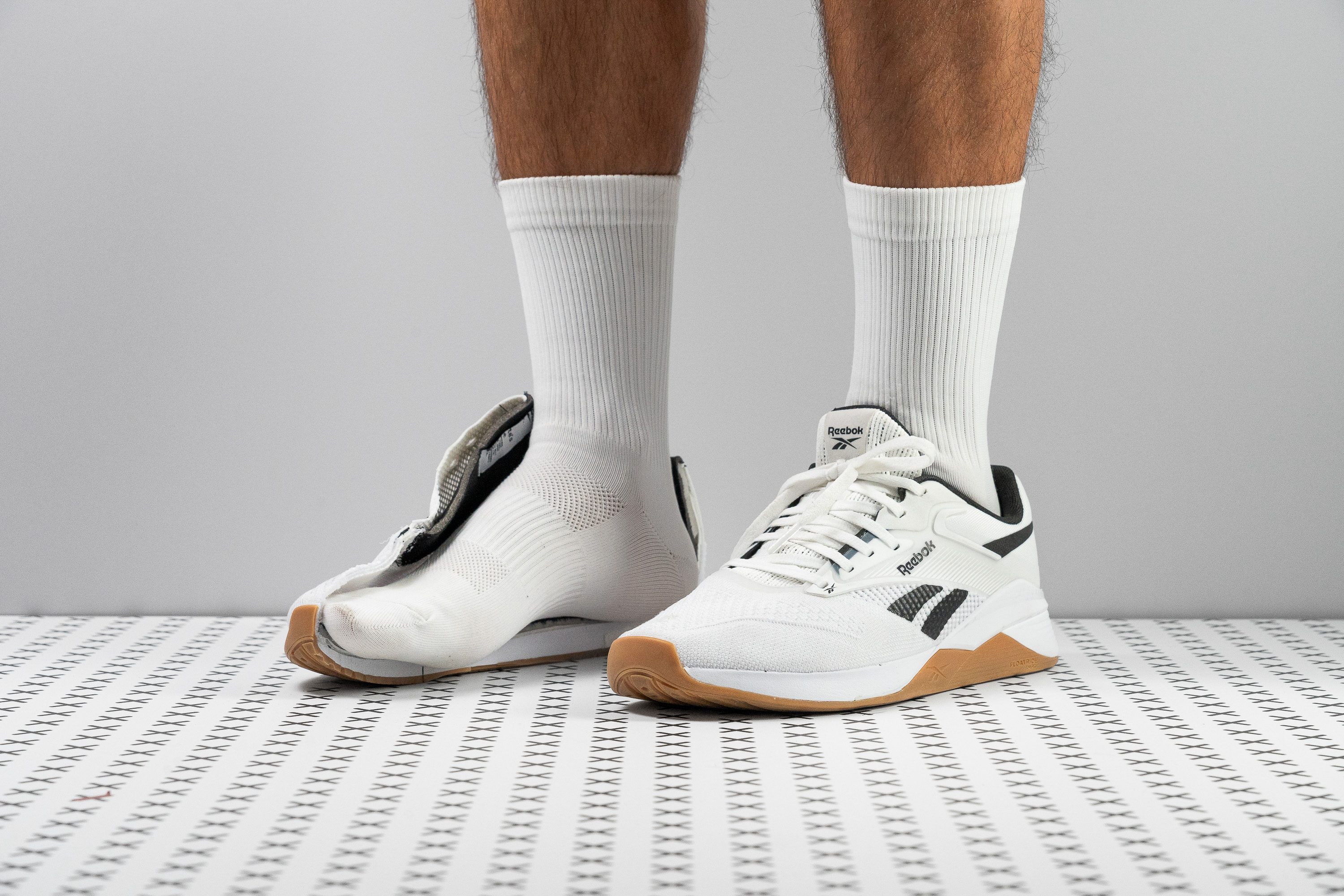













































What makes it the best?
We consider this shoe as the most durable among all the HIIT shoes because several of its qualities were just geared toward lasting long. The outsole of the Reebok Nano X4 offered great resistance to abrasion, allowing us to use it without worry outdoors. Its upper delivered impressive durability. Also, the upper’s breathability kept our feet dry (thank goodness!) so we were able to continue with our workouts without ever feeling the need to change socks.
The outsole of the Nano X3 felt a bit firm. We subjected it to the usual Dremel test in the lab, and we were in awe that our assault left only 0.5 mm of damage, which was half that the typical outsole would have incurred.
Similarly, the upper displayed impressive resistance to abrasion. We had to give the Nano X4 a high score of 4 out of 5 for the durability of its upper.
It’s the upper’s breathability that completes the experience for us. We felt air going through the upper material quite easily. We confirmed this when we subjected the X4 to a smoke test and it got a score of 4 out of 5 when smoke pumped through the collar escaped quite easily through the toe box and sidewall materials.
It was just too unfortunate that the Reebok Nano X4 did not really suit gym rats with wide feet. The toe box is 99.4 mm, which is not any higher than the 99.9 mm average.
Pros
- Fantastic wear resistance
- Great balance of cushioning and stability
- Feels grounded and supportive
- Secure foot lockdown
- A fully-gusseted tongue (finally)
- Nice breathability
- Lighter than the X3
- Great grip on gym floors
Cons
- Not for heavy lifting
- Not for wide feet
Best HIIT shoes for speed
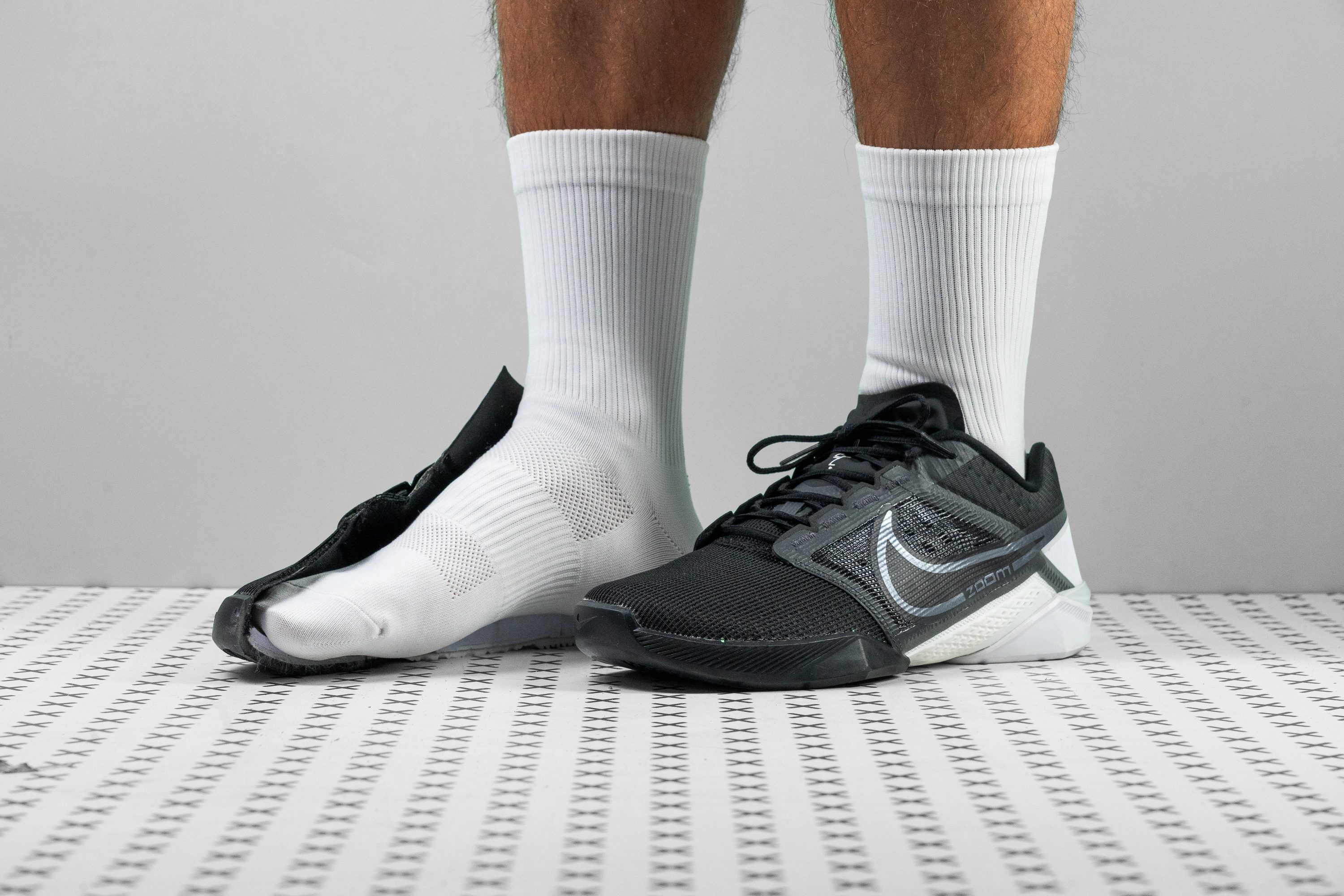




































What makes it the best?
The Nike Zoom Metcon Turbo 2 is our shoe of choice for cranking up the speed on our HIIT workouts, as its responsive and cushioned midsole, phenomenal flexibility and unbeatable breathability help us push the pace while performing our exercises.
We can't help but feel super fast while wearing the Nike Zoom Metcon Turbo 2, especially when doing exercises like jumps and sprints. Its responsive midsole, particularly the Zoom Air unit in the forefoot, adds a nice pop of energy to push us even farther. That midsole foam, which we measured to be 17% softer than the average training shoe, also offers excellent cushioning that keeps our feet well-protected during those speed-oriented exercises.
The Metcon Turbo 2 made just about every exercise we did on our HIIT workouts, from burpees to jumps to sled pushes, much more natural-feeling thanks to its exceptional flexibility. And indeed, our lab test proved how pliable the shoe is, as it took 18.9% less force to bend it 30 degrees.
And perhaps the best thing about performing HIIT workouts in this shoe is that our feet barely get warm even after extended sessions. Its breathability is so good that we scored it a perfect 5 out of 5 in our lab test, as the smoke we pumped into it passed right through the upper with no trouble at all.
However, we don't recommend the shoe for those who go overly hard on their HIIT workouts. The Metcon Turbo 2 failed our toebox durability test - it got a lowly 1 out of 5 - as our Dremel wound up drilling a huge hole in the upper.
Pros
- Bouncy Zoom Air in the forefoot
- Good for short runs
- Perfect for agility drills
- Stable for moderate lifting
- Excellent flexibility
- Amazingly breathable
- Durable outsole
- Reliable outsole traction
Cons
- Upper is not durable rope climbing
- Heavy for a "speed-oriented" trainer
HIIT shoes with the best energy return
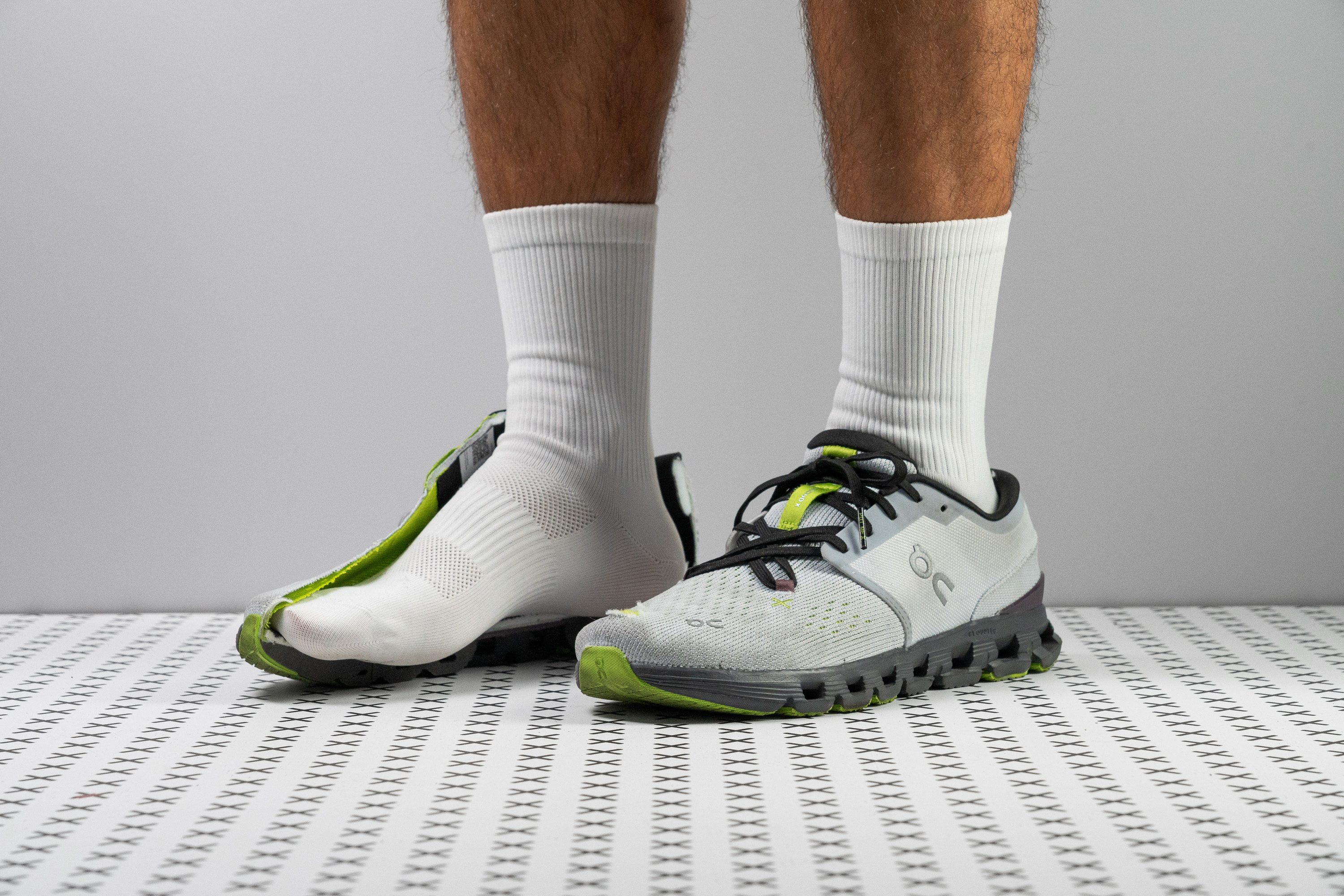





















































What makes it the best?
Among the HIIT shoes we tested in the lab and gym, On Cloud X 4 offers the best energy return. It’s the most complete HIIT package offering cushion for jumps and pleasant responsiveness, all in a lightweight trainer.
No matter how intense our HIIT was, we didn’t feel too sore the next day. Upon checking with our calliper, the 30.4/21.5 mm stack is taller than average. The thick and plush cushion reduces the forces of landings, validated by high shock absorption scores of 109/73 SA in the heel and forefoot, respectively, both exceeding the average.
After each landing, the Cloudtec pods kick the energy back up like a springboard. Our energy is used efficiently because the power we give is rebounded back to us. True enough, we got above-average energy return scores of 58.0% in the heel and 59.4% in the forefoot.
Our agility stems from the shoe’s low weight of 9.5 oz (268g). Being 12.1% below average, it felt easy to manoeuvre.
However, it’s quite stiff when bending our feet. Those who give a lot of importance to free movement should find a more flexible trainer.
Pros
- Super airy and breathable upper
- Feels very light, disappears on foot
- Great cushioning for jumps and short runs
- Highly flexible construction
- Doubles as a comfy walking shoe
- Comfortable step-in feel
- Recycled upper materials
Cons
- Awful durability
- Seriously overpriced
- Stability is almost non-existent
- Weak outsole grip
Best HIIT shoes for outdoor workouts
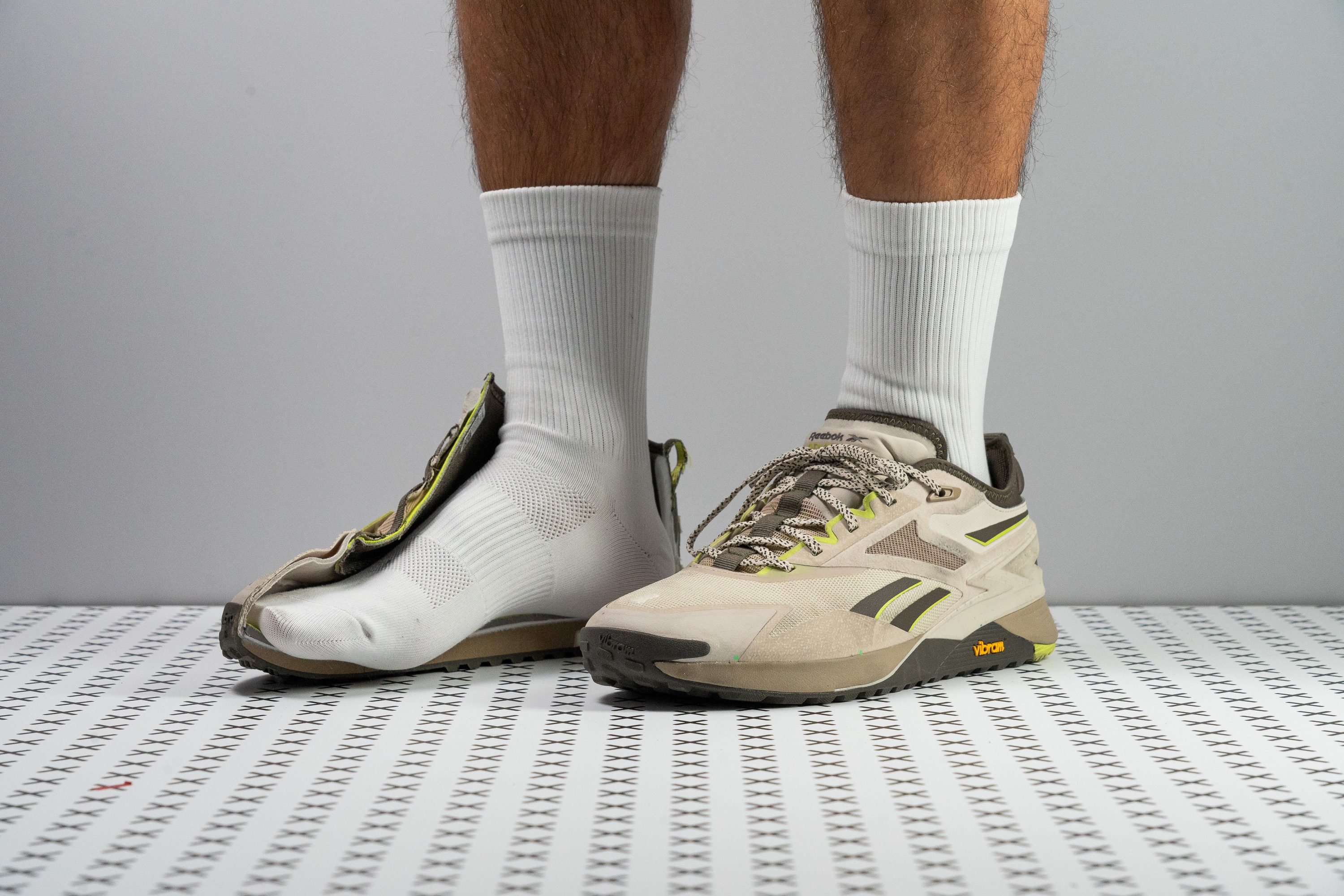








































What makes it the best?
Doing HIIT exercises outdoors presents a lot of challenges to a shoe; good thing the Reebok Nano X3 Adventure is ready for all of them. Its firm outsole was able to resist minor scrapes. Its midsole felt softer than usual, and it allowed us to feel pampered all throughout our workouts. Finally, the shoe’s upper just felt sturdy and it protected us well from abrasion. Given all these benefits, we consider this Reebok shoe as the best for outdoors among all the HIIT shoes that we tried.
Using an HC durometer, we discovered that the outsole of this shoe has a rating of 89.4 HC, which is higher than the 84.0 HC average. The firmness of the sole allowed it to resist punctures caused by pebbles and other debris that are commonly seen on outdoor surfaces. Plus, it never faltered in terms of grip, scoring 0.50 in our traction test, 47.1% above average.
The average midsole softness score is 27.2, but the Reebok Nano X3 Adventure was only rated 21.9 when we measured it using our HA durometer. The resulting softness allowed the midsole to absorb impact quite well.
Then there is the upper that got a perfect 5 for durability during our Dremel test. The shoe was able to hold its own even when colleagues accidentally stepped on our feet or when we unwittingly bumped our toes on exercise equipment.
We didn’t like that the Reebok Nano X3 Adventure was a bit on the heavier side. Weighing 12.45 oz or 453g, it was heavier than the 10.79 oz or 306g. The weight difference was enough to make us feel clunky.
Pros
- Perfect gym-to-trail shoe
- Excellent traction indoors and outdoors
- Great impact protection
- Offers enough court feel
- Super durable upper
- Just enough stability for exercises
- Feels light
- Fairly flexible structure
Cons
- Poor breathability
- Pricey if not used outdoors
Best budget HIIT shoes
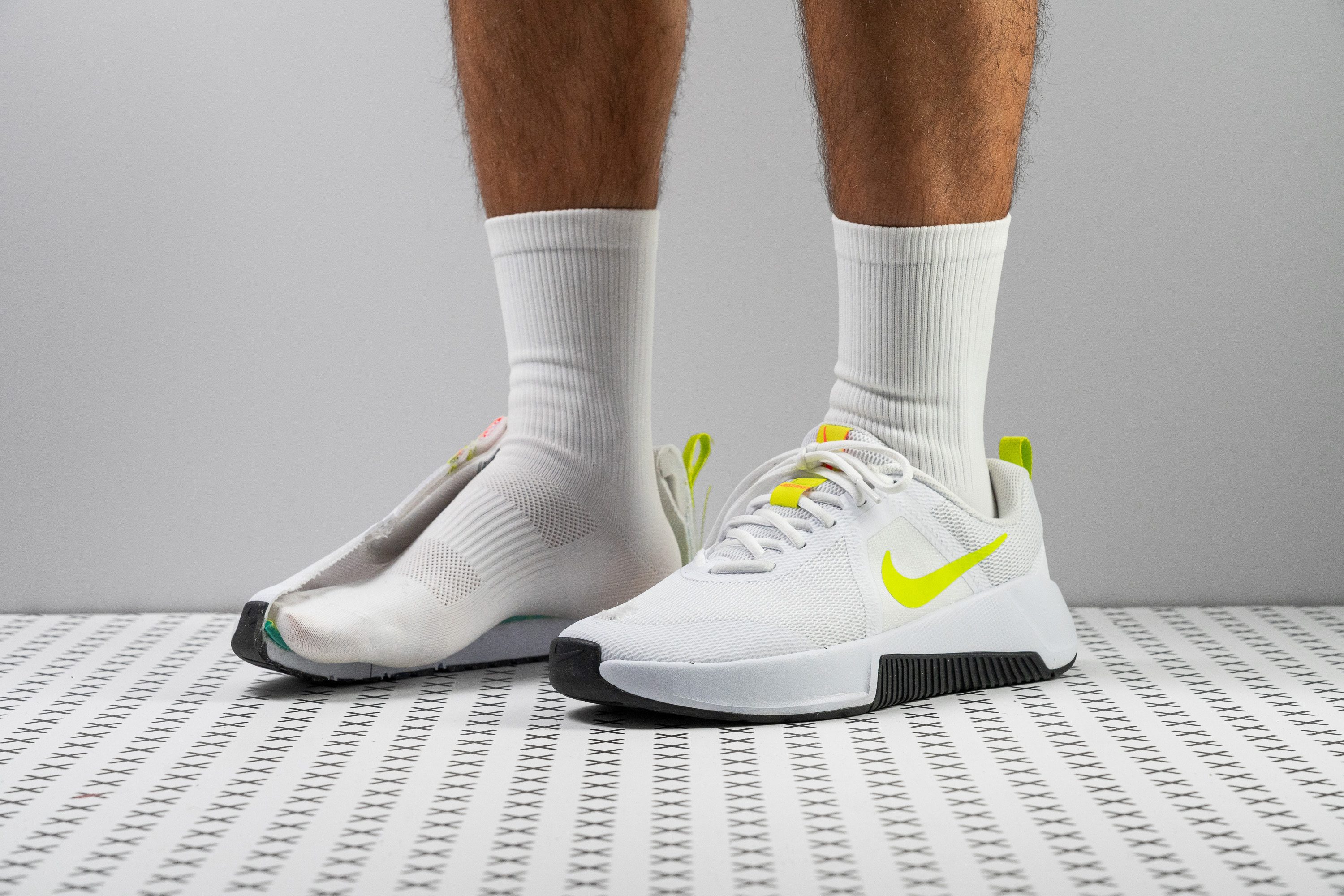

















































What makes it the best?
The average HIIT trainer we’ve tested in the lab costs £110, but we got the Nike MC Trainer 3 for only £80, making it our best-budget HIIT trainer! Even with the price difference, this trainer did not cut back on comfort and performance at all. Its plush platform cushioned every landing while its breathable upper kept us refreshed.
Light in the pocket and on foot, our scales confirm MC Trainer 3 is a below-average 10.4 oz (296g). Its lightness, together with the flexible midsole, boosted our agility and speed for fast-paced workouts. Our bend test confirms it needs a close-to-average 12.3N of force to reach 30 degrees.
With every jump or toe-off, a divine realm awaits. We measured the stack to be 30.6/21.8 mm, higher than the 24.7/18.4 mm average. Plus, the foam feels very pleasant to the touch, confirmed by our durometer to be 13.0% softer than average.
Even atop, the porous mesh upper delivered seamless ventilation. Our feet could breathe freely during the most heated sessions, evidenced by its perfect rating on our smoke test. Our transparency check reveals the upper’s delicate nature while our microscope shows countless ventilation holes. However, this made it more vulnerable to damage, as seen in the hole our Dremel left after testing. We recommend avoiding abrasive activities, such as rope climbing, while sporting this shoe.
Pros
- Fantastic value for money
- Highly breathable
- Doesn't drag the foot down
- Better cushioned than v2
- Heel bevel is better for running and walking
- Decent stability for moderate workouts
- Good flexibility for lunges and planks
- Accommodating toebox
- Comfortable padded interiors
Cons
- Not for flat and wide feet (narrow midfoot)
- Upper lacks wear resistance
- Weak outsole grip
What is HIIT? And what is a HIIT shoe?
High-Intensity Interval Training (HIIT) is a workout protocol that involves short bursts of intense aerobic exercise (20-60 seconds) followed by brief recovery periods (10-60 seconds). Our research found that there are 60+ science-backed benefits of HIIT.
The exercise you do can be anything from sprinting on a treadmill to doing burpees to lifting heavy weights. But no matter what your programme is, every HIIT workout involves the following:
- intense, short bursts of energy
- high impact exercises
- multiple rounds of the same movement
A good HIIT shoe helps you feel equally comfortable and effective in each of these activities. Most cross-training shoes on the market are appropriate for HIIT workouts.
How to choose the right HIIT shoe for you
Your HIIT workouts from day to day might look very different. On one day, you could be doing a Tabata sprint HIIT session on the treadmill, while the next day sees you alternating sets of burpees and then, on the third day, doing a circuit weights session.
Even within a single HIIT workout, you can switch from running to plyometrics and weight training.
In this case, focus on the activities that dominate your HIIT routine and base your shoe choice on them. Here is an overview of HIIT exercises and the shoe features needed for them:
|
HIIT exercises and shoe features to look for |
||
|
Type of activity |
Examples of exercises |
Shoe features |
|
Weightlifting |
Squats, thrusters, overhead presses, lunges, deadlifts, cleans with barbells, dumbbells, and kettlebells. |
|
|
Bodyweight (callisthenics) |
Plyometrics: burpees, box jumps, tuck jumps, skater hops, rope jumping, jumps squats, and jump lunges. Push-ups, mountain climbers, planks, bear walks, lunges, squats, glute bridges, superman holds, wall sits. |
|
|
Cardio machines |
Elliptical, stair climber, rowing machine, stationary bike |
|
|
Treadmill |
|
|
*If you primarily focus on sprint interval training (SIT) and don’t do any weightlifting or forceful lateral movements in your HIIT sessions, you can use a pair of running shoes.
|
Some seasoned athletes have several pairs of training shoes for different types of exercise. But as a beginner, you don’t have to invest in multiple pairs from the start. If one cross-trainer covers â of your typical HIIT workout (i.e. bodyweight training and elliptical), you can also use it for the other â (i.e. treadmill running or moderate lifting). |
Why not use running shoes for HIIT?
A vast majority of running shoes today are packed with extra thick midsoles, soft foams, and propulsive carbon plates to maximise energy return, running efficiency, and long-distance comfort.
However, these same features make running shoes less than ideal for the demands of HIIT:
1. Their midsoles are too thick and plush: High-stacked and cloud-like running shoes are too squishy to keep you stable when lifting heavy weights, doing full-force lateral jumps, or powering through one-legged exercises like Bulgarian squats.
They also make you feel disconnected from the pedals of rowing machines and spin bikes (and that’s if they even fit into the straps in the first place). And what’s worse, their plush foams swallow some of the force you exert making your exercise less effective.
2. They have little-to-no lateral support: Running shoes are specifically designed for the biomechanics of forward motion. They don’t offer the same level of side-to-side stability as dedicated cross-trainers.
Performing dynamic lateral exercises like skater jumps in an unstable running shoe not only feels wobbly but can result in ankle rolls and even sprains.
Best HIIT shoes for weightlifting
If you combine strength training with HIIT by doing AMRAP (as many reps as possible) workouts, you need a shoe that will keep you as stable as possible the entire set.
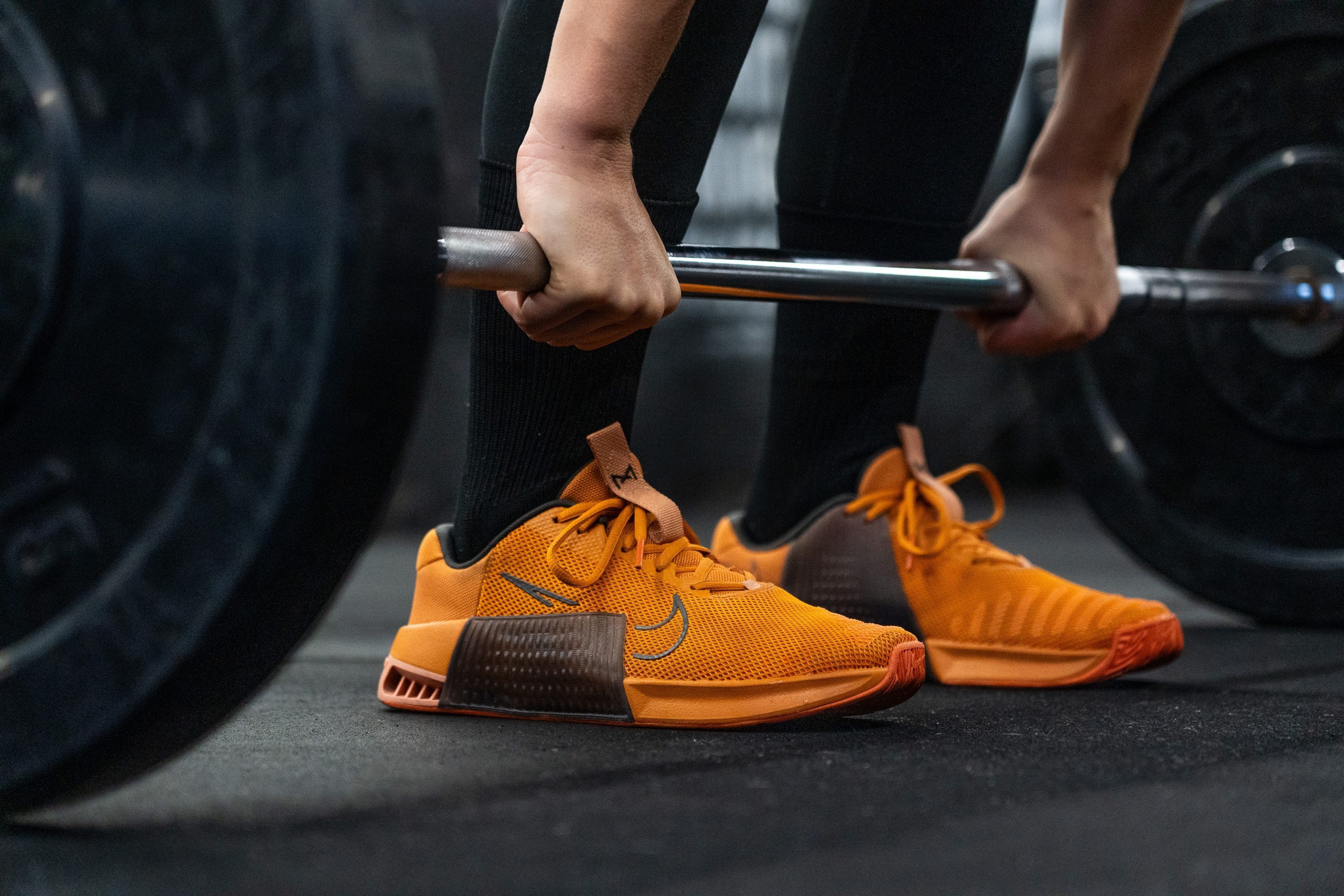
Considering the speed and intensity of this workout method, you must feel 100% planted in your lifting shoe and there should be no underfoot compression to dampen the power transfer.
Here is a checklist of HIIT shoe features to look for if you focus on lifting:
- Firm and wide platform
- Stiff heel counter
- High torsional rigidity
Please note that you may want to look into dedicated lifting shoes with stiff wedged heels and sturdy uppers if you:
- need a shoe for lifting only
- regularly lift over 300 lbs (135 kg)
- want to improve your squat form
- have poor ankle mobility

But if you also include plyometric movements and other cardio exercises in your HIIT sessions, it’s better to go with a versatile cross-trainer that has sufficient stability for lifting.
Let’s take a closer look at the features that provide this stability.
Firm and wide platform
Come to think of it, all the power you generate to lift heavy weight pushes off your two feet. And if the underfoot foundation is even slightly too soft or too narrow, the whole exercise goes off the rails.
That’s why the midsoles of most cross-trainers are made notably firmer in the heel. Based on our Shore A durometer measurements, the midsole firmness of these shoes returns at least 30 HA in the heel.
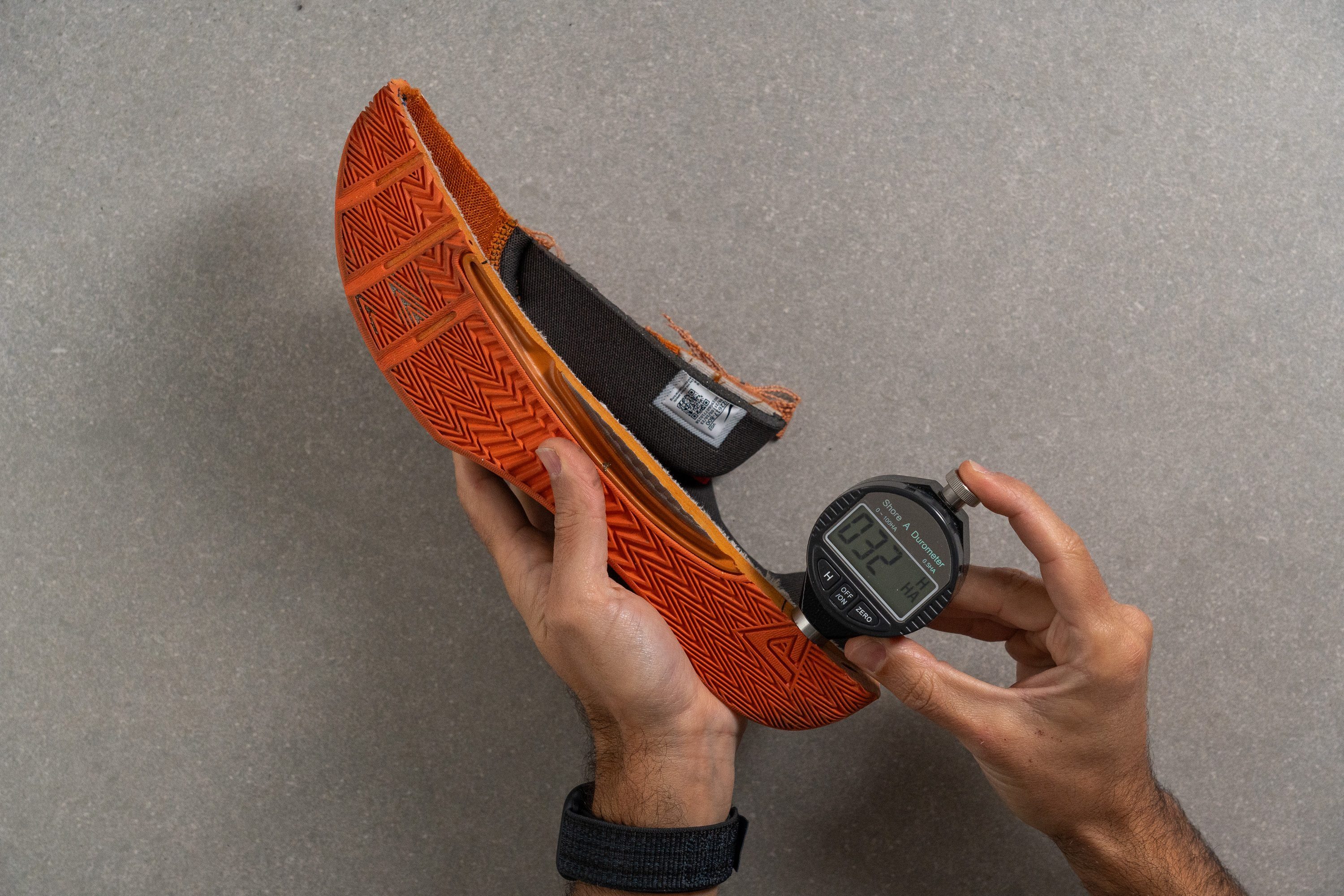
For reference, we categorise 0-20 HA as soft, 20-30 HA as balanced, and 30+ HA as firm. The higher the HA reading, the firmer the foam.
In addition to firm foams, the heels of these trainers are securely reinforced with stiff TPU stabilisers, sidewalls, and other sorts of supportive components that minimise shifting and wobbling in the rearfoot.
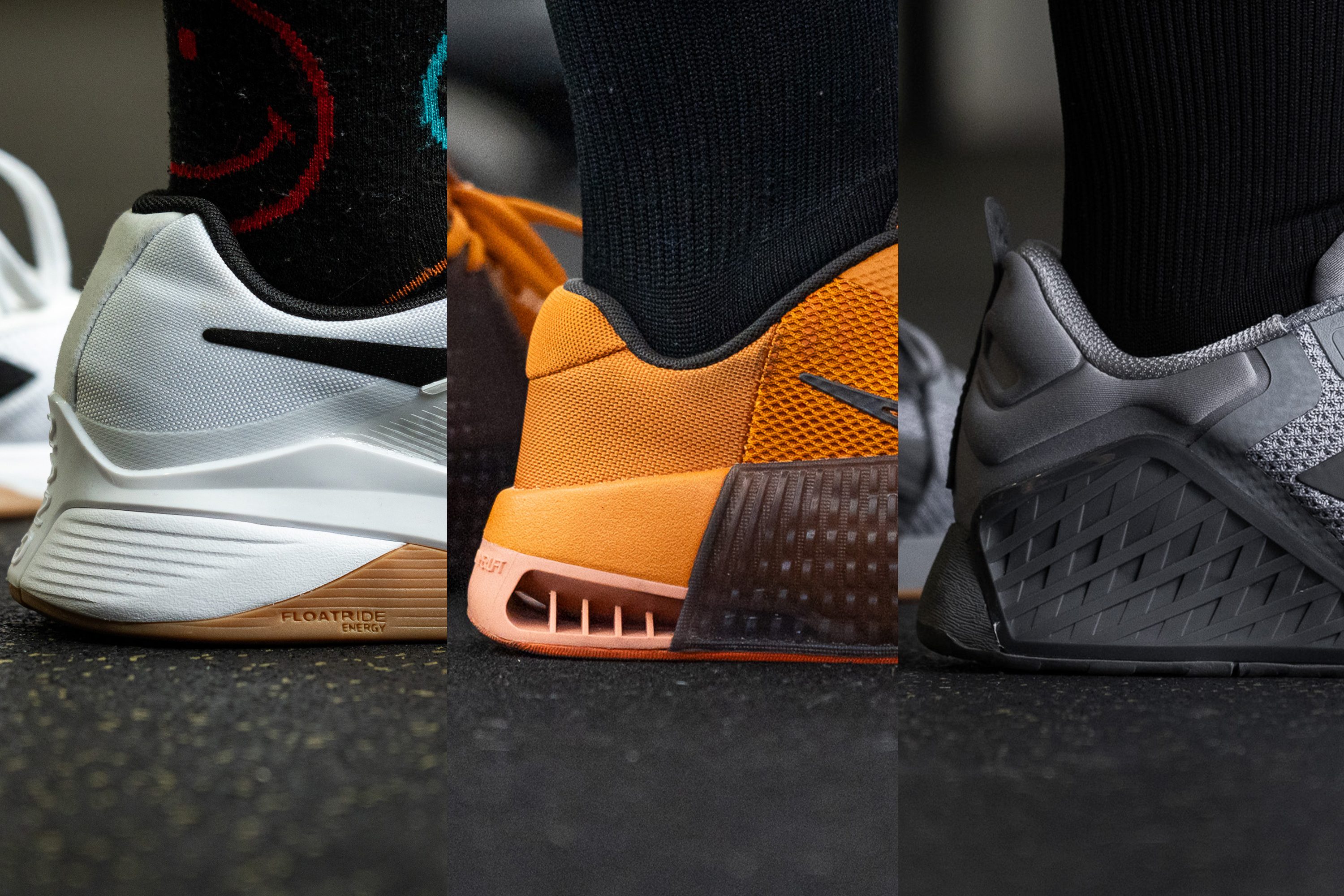
Last but not least, the base of these trainers is very generously wide. We use a digital calliper to measure the widest parts of each shoe’s heel and forefoot to let you know their platform dimensions.

Stiff heel counter
Those plastic exoskeletons at the back of the shoes often extend up to include the heel counters as well.
Complemented by generous ankle padding, these sturdy heel counters add stiffness and support around the wearer’s heel and ankle.
We perform a simple push-and-squeeze test on each heel counter to rate its stiffness on a 1-5 scale (the higher the stiffer).
High torsional rigidity
The quickest way to check how much lateral support is packed in a HIIT shoe is by twisting it with your hands. The amount of resistance you feel is proportional to the level of support.
The shoe’s ability to hold your foot in place becomes especially important when doing lunges, splits, and one-legged squats. And when the shoe is hard to twist, it lowers the risk of your foot rolling sideways too.
In our lab, we assess each shoe’s torsional rigidity with a manual test. The stiffest trainers get the highest scores on a 1-5 scale.
Now that you know what features make a training shoe perfect for lifting-based HIIT workouts, here is an overview of the most stable HIIT shoes:
Best HIIT shoes for bodyweight training
In most cases, you don’t need any equipment to engage in a HIIT regimen, especially if you are a beginner gym goer or follow YouTube workout videos at home.
Considering how demanding a HIIT programme can be, your own body weight is enough to reap its numerous benefits.
But to feel your best and train efficiently, you will need a shoe with the following features:
- Sufficient cushioning
- Good lateral support
- Flexible forefoot
- Lightweight
Good cushioning
The intensity of HIIT training means that you’re putting a lot of stress on the lower body joints. Whether you are sprinting on a treadmill, doing box jumps, or repping out with burpees, your ankles, knees, and hips are going to take a beating.
To minimise that impact, you need a pair of shoes with a good level of cushioning, or shock absorption. The latter will dissipate the amount of kinetic energy that transfers from the ground to your foot as you land during jumps and runs.
But don’t rush to get your running shoes just yet.
Remember that in HIIT, you perform a lot of side-to-side and one-legged movements, which require added lateral stability. Some running shoes have so much cushioning that it feels as if you’re standing on a pillow. That will rob you of the stability you need and cause energy and power leaks that will prevent you from performing at your best.
We follow a scientifically acclaimed ASTM F1976 method for measuring each trainer's shock absorption in both the heel and the forefoot. Based on the data we got from dozens of HIIT shoes, we recommend choosing options with a shock absorption of at least 90 SA in the heel.
Good lateral support
In bodyweight HIIT, you don’t need the same level of rigidity and support as in a lifting-oriented shoe. Unless you have flat feet and severe overpronation which call for higher rigidity in the heel and midfoot and a stiffer heel counter.
But in most cases, a trainer with torsional rigidity of 2-3 can get the job done and keep you steady during lateral jumps and lunges.
Just keep in mind that you would opt for a stiffer shoe if you need a higher degree of support.
Flexible forefoot
Whether you’re jumping, doing push-ups, or rocking some mountain climbers, you need to be able to bend your feet freely.
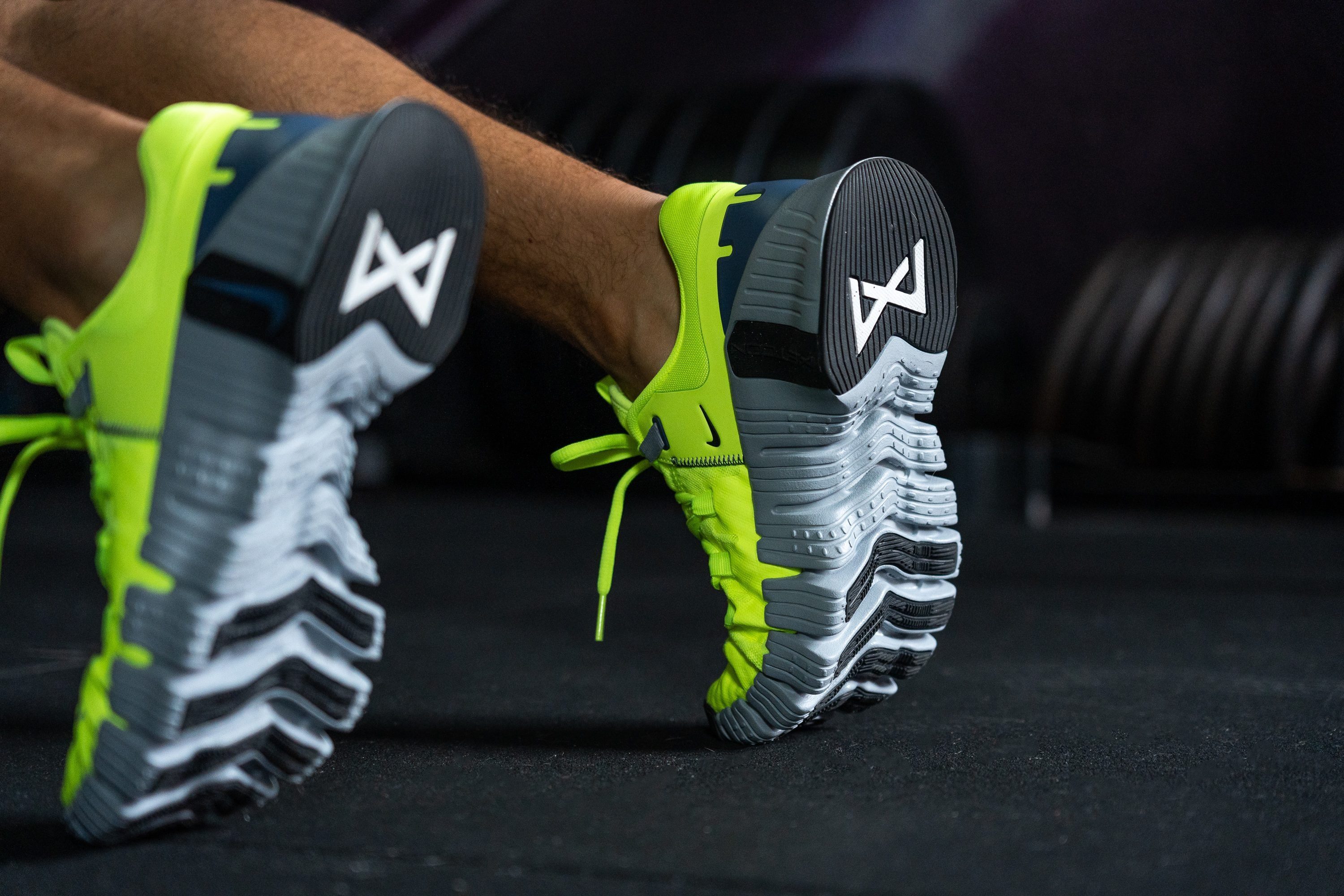
That’s why we keep emphasising that you shouldn’t choose an overly thick or stiff trainer for bodyweight HIIT.
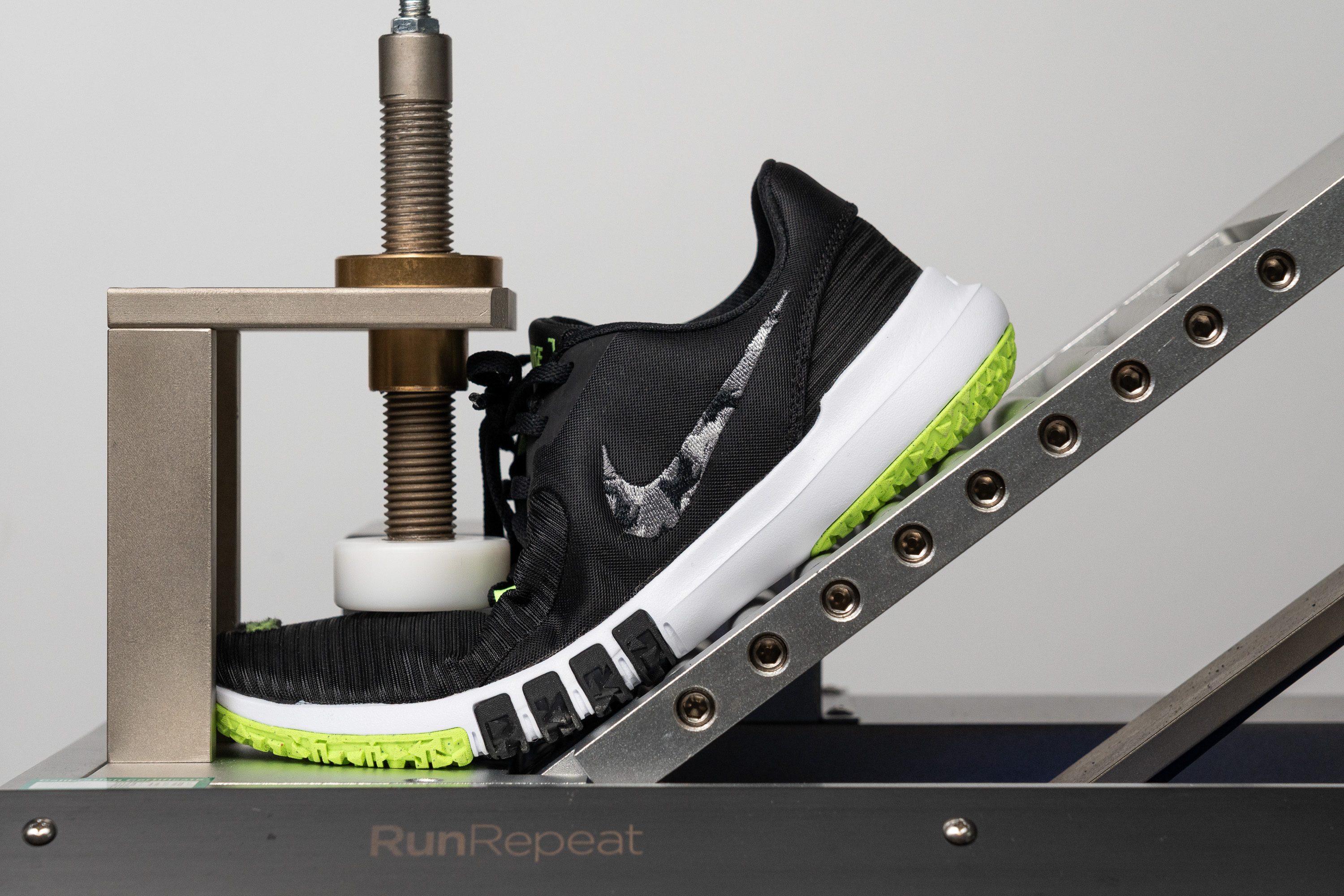
In our lab, we measure the forefoot flexibility of each training shoe. The less force (N) it takes to bend the shoe to a 30-degree angle, the higher its flexibility.
Lightweight
Doing several sets of burpees or box jumps in a row is punishing enough as is. So you probably don’t want to make your life harder with a heavier HIIT shoe?
To let you know exactly how light or heavy each training shoe is, we weigh them all in the same size for consistency (men’s US 9 = women’s US 10.5). If a trainer weighs 10.6 oz (300g) or less, we consider it as lightweight.
Best HIIT shoes for cardio machines
Most types of cardio machines (elliptical, rowing machine, stationary bike) involve a pretty straightforward push-and-pull action. That’s why they don’t ask much from your training shoes.
Our only recommendation here is to choose a trainer with a relatively flat, firm, and low-stack midsole.
This will ensure that your shoes fit into the machine straps, provide a broad contact area with the pedals, and don’t swallow up your force with a squishy foam.
You can even use a pair of running shoes or sporty trainers if they meet the criteria above.
However, if your HIIT sessions are built around treadmill running, you would want a better-cushioned cross-trainer or a full-on running shoe.
Choose breathable HIIT shoes
By their very nature, HIIT workouts are short and intense. If you aren’t dripping buckets of sweat at the end of it, you’re probably not pushing hard enough.
That means that your feet are going to get very hot, wet, and sticky at the end of a decent HIIT session. The more breathable and lightweight the upper material of the shoe is, the more comfortable your workout will be.
Because training shoes vary in their ventilation capacity, we perform a series of lab tests to rate their breathability on a 1-5 scale (5 being the most breathable).
That includes pumping smoke through the shoe’s toebox to check how quickly and easily it can let the heat out, hovering its half-cut upper over the LED light to locate ventilation holes, and studying its fabric under the microscope.
How long do HIIT shoes last?
Considering the intensity of this training programme, your HIIT shoes are likely to wear out faster than other types of athletic shoes.
And that doesn’t always mean visible signs of deterioration like holes in the upper or missing chunks of rubber on the outsole. The high-impact nature of HIIT is harder on the cushioning of your training shoes and you can tell feel it degrading when you start to experience foot or leg pain post-workout (i.e. foot arch pain or shin splints).
Depending on how often you work out, your body weight, and the added weight you lift, you may need a replacement pair every 6-12 months.
The inherent wear resistance of shoe materials also contributes to their longevity. We use a Dremel with a sandpaper tip in our lab to check each HIIT shoe’s durability in the toebox, the inner heel lining, and the rubber outsole.
The speed, pressure, and timing remain the same for consistent results.
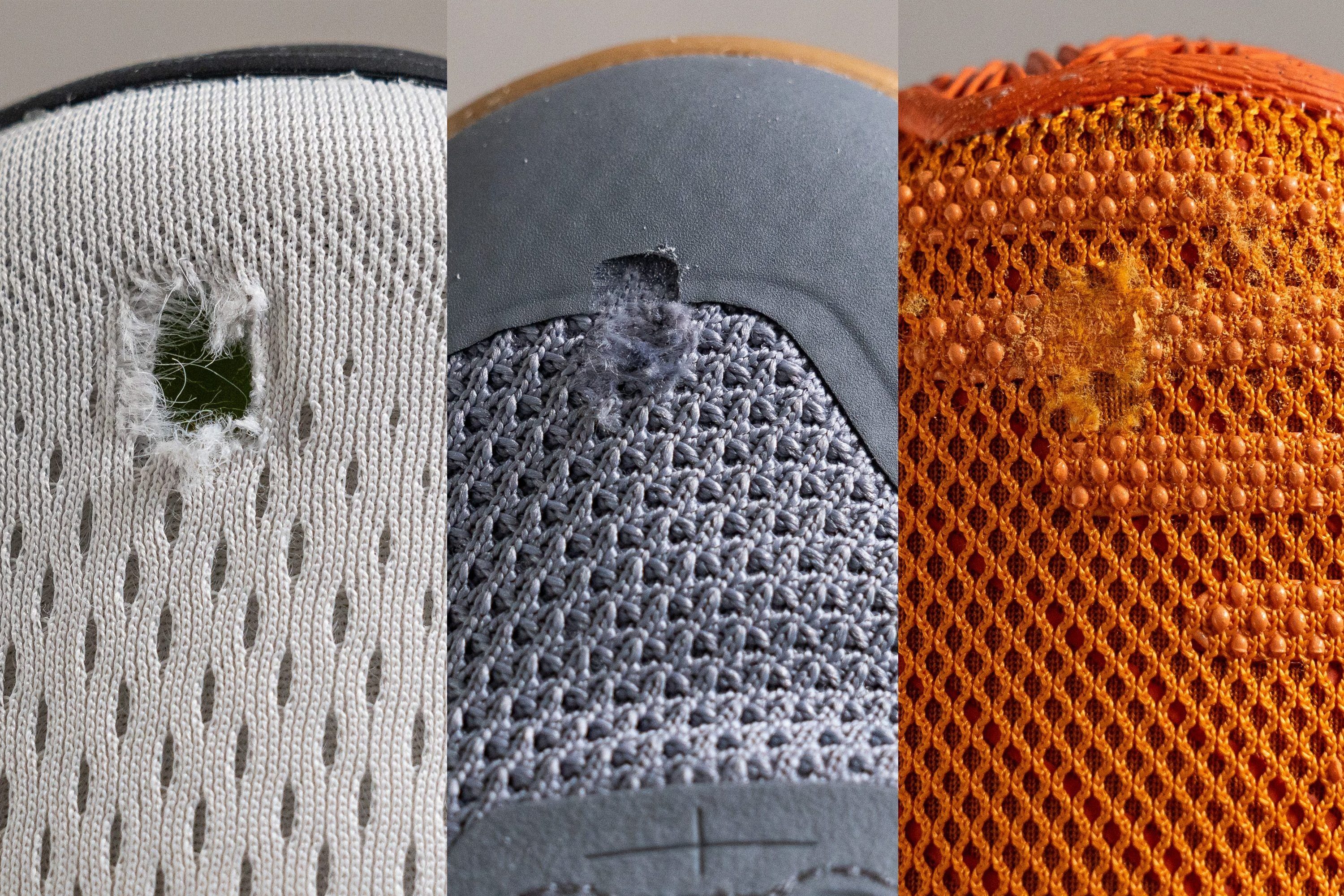
Here is the overview of the most durable HIIT shoes based on our Dremel tests*:
*Toebox and heel padding durability are given a durability score from 1 to 5 based on the severity of damage (the higher, the better). Outsole durability shows the exact depth of the drilled-out dent (the smaller, the better).
Getting the right size and fit in HIIT shoes
You want a relatively snug-fitting shoe for HIIT because it will prevent your heel from shifting and sliding around during fast-paced movements (like lateral plyometric jumps) and weightlifting. To achieve that, you have to ace two things - size (length) and fit (width).
Size
Research shows that a large portion of the population is wearing the wrong-sized shoes! And considering that brands don’t follow any standard shoe sizing scheme makes the problem even more complicated.
To increase your chances of ordering the right HIIT shoe size, we recommend:
- measuring your current foot length (ask a friend to help you)
- checking your size in the tool below (it contains official size charts of 40+ brands)
Fit
You also want to make sure that the trainer provides enough space for your toes width-wise. Depending on your foot shape, you may prefer a narrower and pointier toebox or a wider and more rounded one.
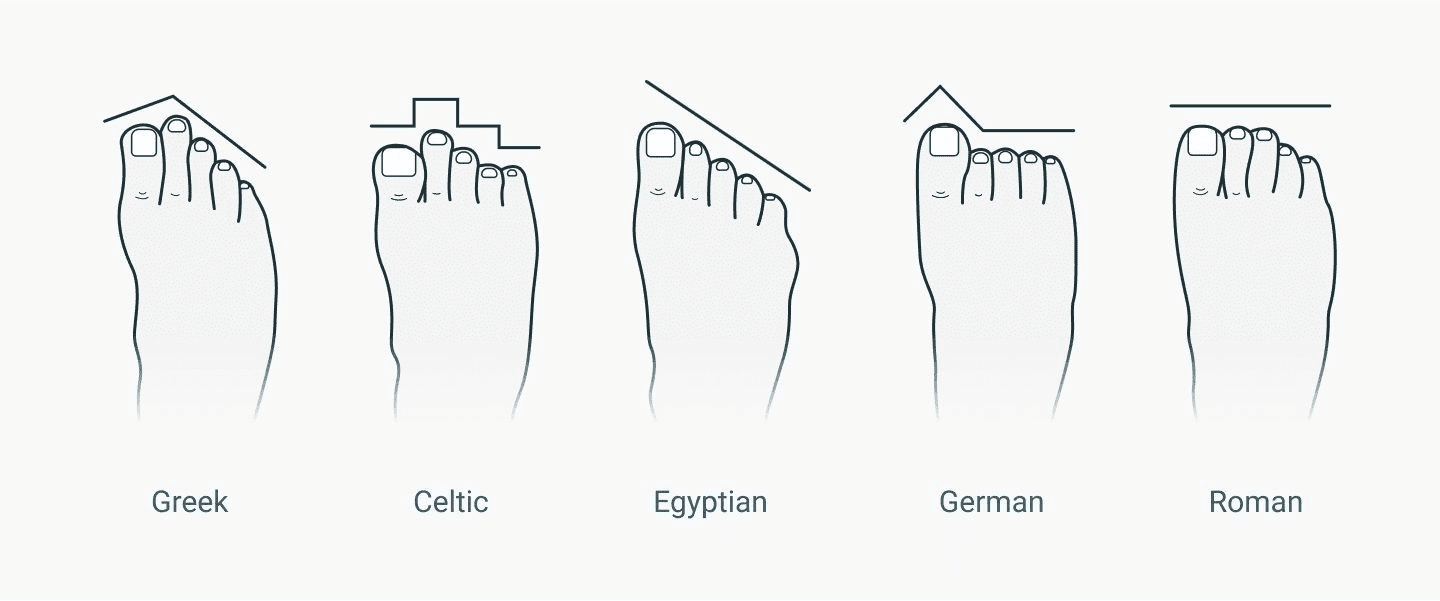
Even in the same size and brand, two shoes can have vastly different widths. To let you know how much in-shoe space to expect in a given trainer, we create gel moulds of each one in our lab.
Once the mould is ready, we use a digital calliper to measure the following dimensions: the widest part of the mould (shoe width), the area near the big toe (toebox width), and the toebox height.
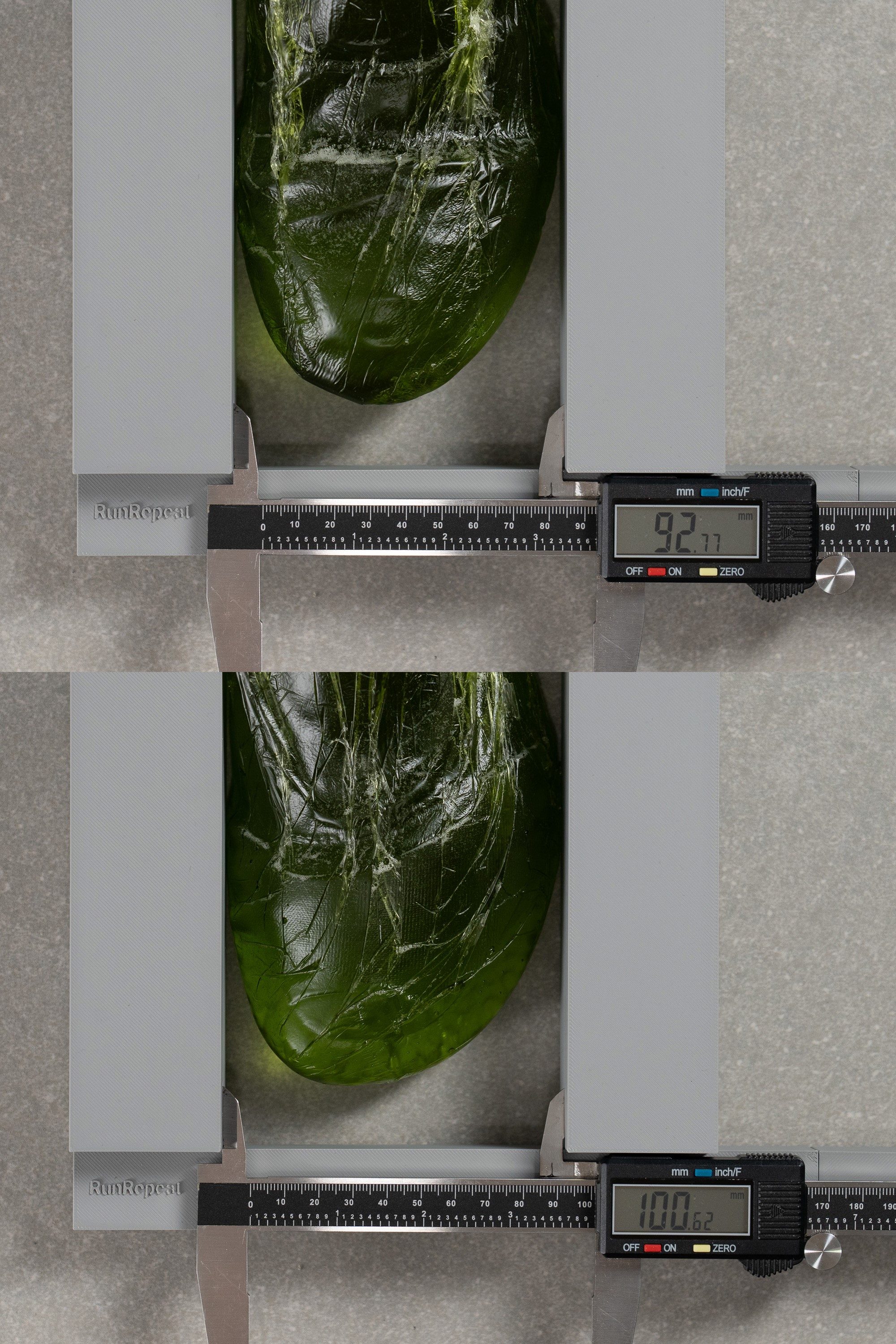
Keep in mind that we always test shoes in Men's US 9, regular width. If the width variation in those is not enough, you can look for shoes that are marked as Narrow, Wide, or Extra Wide.
|
How to find the right fit in HIIT shoes |
|
|
Narrow feet |
|
|
Medium feet |
|
|
Wide feet |
+ choose a stretchy upper if you have bunions
|
TIP: Make sure you’re wearing your workout socks when trying a new pair of cross-trainers.
